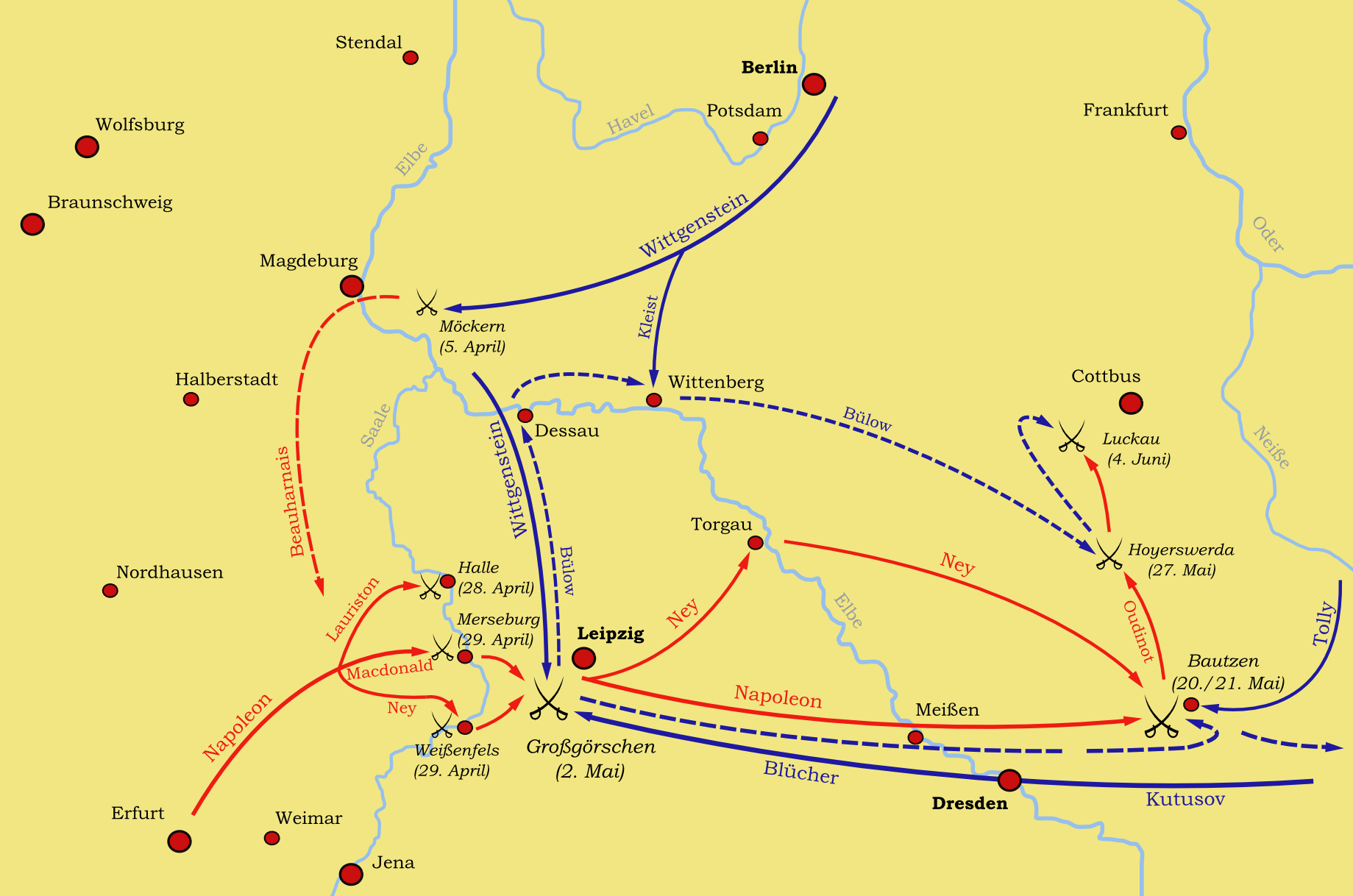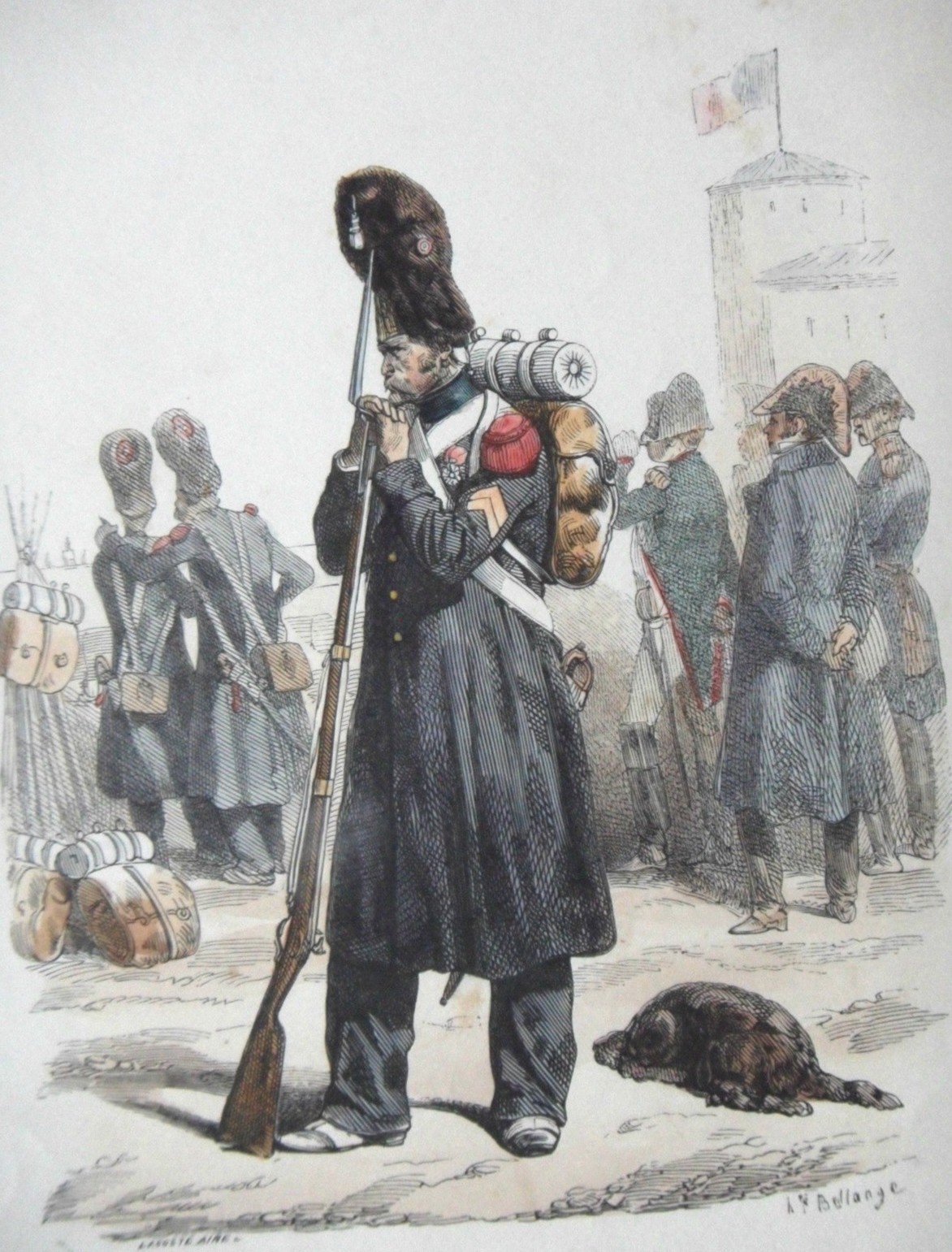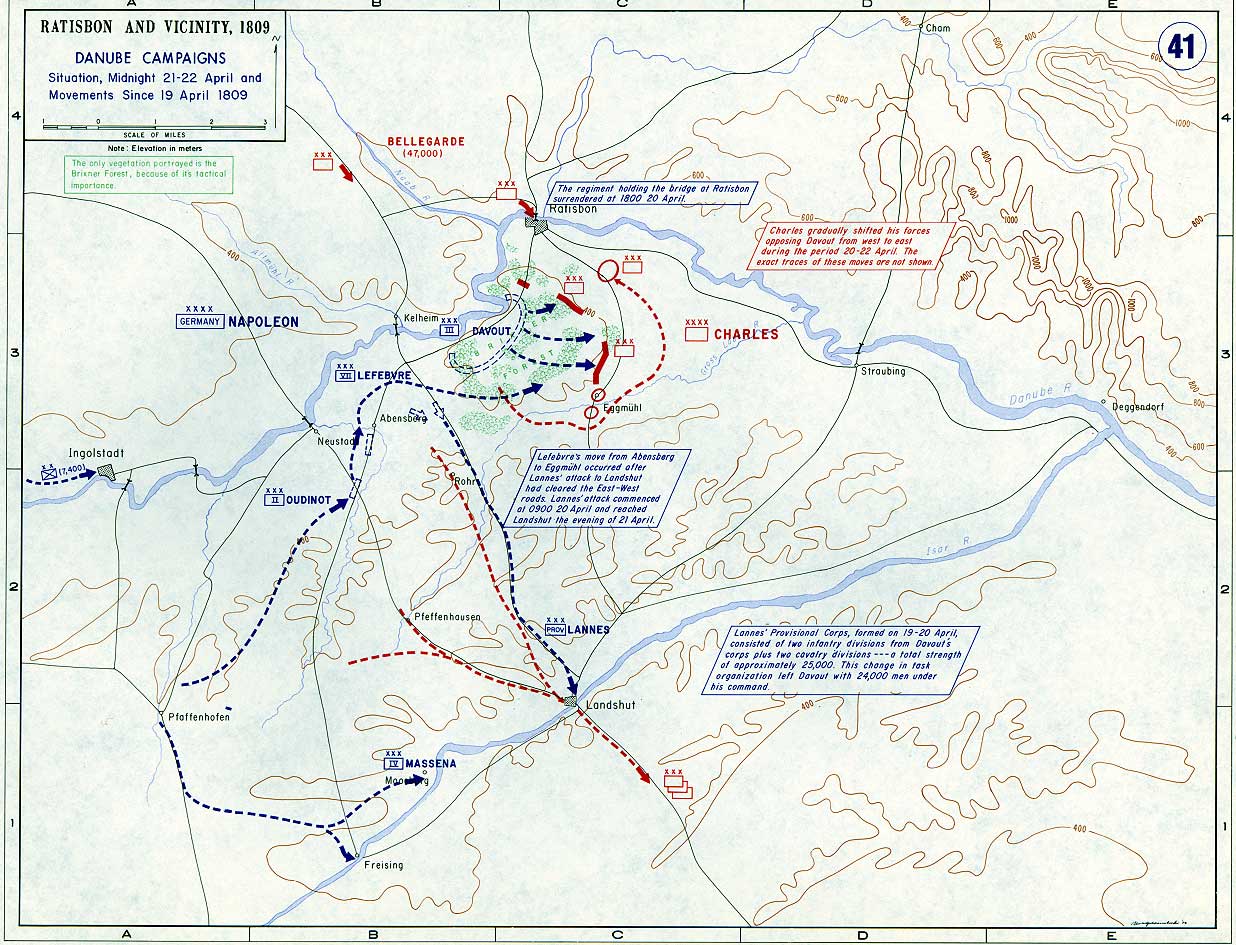|
Pierre Berthezène
Pierre, baron Berthezène (24 March 1775, Vendargues - 9 October 1847, Vendargues) was a French general. Life Early military career Pierre's parents, Jacques Berthezène and Marguerite Causse, were from a modest background. They chose a career in the church for him and the village priest taught him in preparation for the seminary at Montpellier. Berthezène was still studying when the French Revolution broke out. On 15 September 1793 he joined the 5th volunteer battalion of Hérault, amalgamated into the 7th provisional battle demi-brigade, which later became the 10th line infantry regiment in year 4. He rose to corporal, sergeant and sergeant-major on 17, 19 and 22 September. In this regiment he met other non-commissioned officers such as Lannes and Victor. Revolutionary wars He joined the armée des Pyrénées orientales, but a few days after the affair at Peyrestortes, the brigade went to reinforce the corps besieging Toulon. At the capture of the British redoubt which ... [...More Info...] [...Related Items...] OR: [Wikipedia] [Google] [Baidu] |
Peace Of Tilsitt
The Treaties of Tilsit were two agreements signed by French Emperor Napoleon in the town of Tilsit in July 1807 in the aftermath of his victory at Friedland. The first was signed on 7 July, between Napoleon and Russian Emperor Alexander, when they met on a raft in the middle of the Neman River. The second was signed with Prussia on 9 July. The treaties were made at the expense of the Prussian king, who had already agreed to a truce on 25 June after the Grande Armée had captured Berlin and pursued him to the easternmost frontier of his realm. In Tilsit, he ceded about half of his pre-war territories. From those territories, Napoleon had created French sister republics, which were formalized and recognized at Tilsit: the Kingdom of Westphalia, the Duchy of Warsaw and the Free City of Danzig; the other ceded territories were awarded to existing French client states and to Russia. Napoleon not only cemented his control of Central Europe but also had Russia and the truncated Pr ... [...More Info...] [...Related Items...] OR: [Wikipedia] [Google] [Baidu] |
Laurent De Gouvion Saint-Cyr
Laurent de Gouvion Saint-Cyr, 1st Marquis of Gouvion-Saint-Cyr (; 13 April 1764 – 17 March 1830) was a French military commander in the French Revolutionary and Napoleonic Wars who rose to the rank of Marshal of the Empire. He is regarded as Napoleon's finest commander in defensive warfare. Early life He was born Laurent Gouvion in Toul, Three Bishoprics (now Meurthe-et-Moselle), the eldest child of Jean-Baptiste Gouvion, a tanner, and his wife Anne-Marie Mercier. He adopted the name Saint-Cyr after his mother, who had abandoned him at an early age. He went to Rome when he was eighteen in order to study painting, but, although he continued his artistic studies after his return to Paris in 1784, he never adopted the profession of a painter. He married Anne Gouvion (Toul, 2 November 1775 - Paris, 18 June 1844) and had issue, including Laurent François, Marquis de Gouvion Saint-Cyr (30 December 1815 - 30 January 1904), married in Saint-Bouize on 17 August 1847 to Marie Ad ... [...More Info...] [...Related Items...] OR: [Wikipedia] [Google] [Baidu] |
Battle Of Bautzen (1813)
In the Battle of Bautzen (20–21 May 1813), a combined Prusso–Russian army, that was massively outnumbered, was pushed back by Napoleon but escaped destruction, with some sources claiming that Marshal Michel Ney failed to block their retreat. The Prussians under General Gebhard Leberecht von Blücher and Russians under General Peter Wittgenstein, retreating after their defeat at Lützen were attacked by French forces under Napoleon. Prelude The Prusso-Russian army was in a full retreat following their defeat at the Battle of Lützen. Finally, generals Wittgenstein and Blücher were ordered to stop at Bautzen by Tsar Alexander I and King Frederick William III. The Russo-Prussian army was nearly 96,000 strong, but Napoleon had 144,000. Wittgenstein formed two strong defensive lines east of the River Spree, with the first holding strongpoints in villages and along hills and the second holding the bridges behind a river bend. Their left flank was anchored by the town ... [...More Info...] [...Related Items...] OR: [Wikipedia] [Google] [Baidu] |
Battle Of Lützen (1813)
In the Battle of Lützen (German: ''Schlacht von Großgörschen'', 2 May 1813), Napoleon I of France defeated an allied army of the Sixth Coalition. The Russian commander, Prince Peter Wittgenstein, attempting to forestall Napoleon's capture of Leipzig, attacked the French right wing near Lützen, Saxony-Anhalt, Germany, surprising Napoleon. Quickly recovering, he ordered a double envelopment of the allies. After a day of heavy fighting, the imminent encirclement of his army prompted Wittgenstein to retreat. Due to a shortage of cavalry, the French did not pursue. The next battle would be fought at Bautzen three weeks later. Prelude Following the disaster of French invasion of Russia in 1812, a new Coalition consisting of Britain, Sweden, Prussia and Russia formed against France. In response to this, Napoleon hastily assembled an army of just over 200,000 which included inexperienced recruits, troops from Spain and garrison battalions but was severely short of horses ( ... [...More Info...] [...Related Items...] OR: [Wikipedia] [Google] [Baidu] |
Battle Of The Beresina
The Battle of (the) Berezina (or Beresina) took place from 26 to 29 November 1812, between Napoleon's Grande Armée and the Imperial Russian Army under Field Marshal Wittgenstein and Admiral Chichagov. Napoleon was retreating back toward Poland in chaos after the aborted occupation of Moscow and trying to cross the Berezina River at Borisov. The outcome of the battle was inconclusive as, despite heavy losses, Napoleon managed to cross the river and continue his retreat with the surviving remnants of his army. Background Napoleon had fought his way out of Russia in the battles of Maloyaroslavets, Vyazma and Krasnoi. His plan was to cross the Berezina River at Borisov (in Belarusian Governorate General) in order to join up with his Austrian ally, Field Marshall Schwarzenberg at Minsk. As the central core of Napoleon's Grande Armée marched toward Borisov, however, Russian troops supported by Cossacks moved to block his battered force, reduced to 49,000 men under arms and 40,000 ... [...More Info...] [...Related Items...] OR: [Wikipedia] [Google] [Baidu] |
French Invasion Of Russia
The French invasion of Russia, also known as the Russian campaign, the Second Polish War, the Army of Twenty nations, and the Patriotic War of 1812 was launched by Napoleon Bonaparte to force the Russian Empire back into the continental blockade of the United Kingdom. Napoleon's invasion of Russia is one of the best studied military campaigns in history and is listed among the most lethal military operations in world history. It is characterized by the massive toll on human life: in less than six months nearly a million soldiers and civilians died. On 24 June 1812 and the following days, the first wave of the multinational crossed the Niemen into Russia. Through a series of long forced marches, Napoleon pushed his army of almost half a million people rapidly through Western Russia, now Belarus, in an attempt to destroy the separated Russian armies of Barclay de Tolly and Pyotr Bagration who amounted to around 180,000–220,000 at this time. Within six weeks, Napoleon lost ... [...More Info...] [...Related Items...] OR: [Wikipedia] [Google] [Baidu] |
Imperial Guard (Napoleon I)
The Imperial Guard (French: ''Garde Impériale'') was originally a small group of elite soldiers of the French Army under the direct command of Napoleon I, but grew considerably over time. It acted as his bodyguard and tactical reserve, and he was careful of its use in battle. The Guard was divided into the staff, infantry, cavalry, and artillery regiments, as well as battalions of sappers and marines. The guard itself as a whole distinguished between the experienced veterans and less experienced members by being separated into three sections: the Old Guard, Middle Guard and Young Guard. History The Guard had its origin in the Consular Guard (''Garde des consuls''), created November 28, 1799, by the union of the Guard of the Directory (''Garde du Directoire exécutif'') and the Grenadiers of the Legislature (''Grenadiers près de la Représentation nationale''). These formations had for principal purpose the security of the executive and legislative branches of the French ... [...More Info...] [...Related Items...] OR: [Wikipedia] [Google] [Baidu] |
Walcheren
Walcheren () is a region and former island in the Dutch province of Zeeland at the mouth of the Scheldt estuary. It lies between the Eastern Scheldt in the north and the Western Scheldt in the south and is roughly the shape of a rhombus. The two sides facing the North Sea consist of dunes and the rest of its coastline is made up of dykes. Middelburg, the provincial capital, lies at Walcheren's centre. Vlissingen, to the south, is the main harbour and the third municipality is Veere. Originally, Walcheren was an island, but the Sloedam, constructed in 1871 for a railway, and poldering after World War II have connected it to the (former) island of Zuid-Beveland, which in turn has been connected to the North Brabant mainland. History Early history As early as Roman times, the island functioned as a point of departure for ships going to Britain; it had a temple of the goddess Nehalennia who was popular with those who braved the waters of the North Sea. The Romans called it " ... [...More Info...] [...Related Items...] OR: [Wikipedia] [Google] [Baidu] |
Aspern-Essling
In the Battle of Aspern-Essling (21–22 May 1809), Napoleon crossed the Danube near Vienna, but the French and their allies were attacked and forced back across the river by the Austrians under Archduke Charles. It was the first time Napoleon had been personally defeated in a major battle, as well as his first defeat in a decade. Archduke Charles drove out the French but fell short of destroying their army. The Austrian artillery dominated the battlefield, firing 53,000 rounds compared to 24,300 French. The French lost over 20,000 men including one of Napoleon's ablest field commanders and closest friends, Marshal Jean Lannes. Background At the time of the battle Napoleon was in possession of Vienna, the bridges over the Danube had been broken, and the Archduke's army was near the Bisamberg, a hill near Korneuburg, on the left bank of the river. The French wanted to cross the Danube. A first crossing attempt on the Schwarze Lackenau on 13 May was repulsed with some 700 French ... [...More Info...] [...Related Items...] OR: [Wikipedia] [Google] [Baidu] |
Battle Of Eckmühl
The Battle of Eckmühl, fought on 22 April 1809, was the turning point of the 1809 Campaign, also known as the War of the Fifth Coalition. Napoleon I had been unprepared for the start of hostilities on 10 April 1809, by the Austrians under the Archduke Charles of Austria and for the first time since assuming the French Imperial Crown had been forced to give up the strategic initiative to an opponent. Thanks to the dogged defense waged by the III Corps, commanded by Marshal Davout, and the Bavarian VII Corps, commanded by Marshal Lefebvre, Napoleon was able to defeat the principal Austrian army and wrest the strategic initiative for the remainder of the war. Strategic situation Operating over a fifty-mile front, from Regensburg (Ratisbon to the French) to Pfaffenhofen, marked by stretches of rugged, wooded terrain, neither the French nor the Austrians had developed adequate intelligence about their opponent's strength, dispositions or intentions. Assuming that the bulk ... [...More Info...] [...Related Items...] OR: [Wikipedia] [Google] [Baidu] |
Regensburg
Regensburg or is a city in eastern Bavaria, at the confluence of the Danube, Naab and Regen rivers. It is capital of the Upper Palatinate subregion of the state in the south of Germany. With more than 150,000 inhabitants, Regensburg is the fourth-largest city in the State of Bavaria after Munich, Nuremberg and Augsburg. From its foundation as an imperial Roman river fort, the city has been the political, economic and cultural centre of the surrounding region; it is still known in the Romance languages by a cognate of its Latin name of "Ratisbona" (the version "Ratisbon" was long current in English). Later, under the rule of the Holy Roman Empire, it housed the Perpetual Diet of Regensburg. The medieval centre of the city was made a UNESCO World Heritage Site in 2006 because of its well-preserved architecture and the city's historical importance for assemblies during the Holy Roman Empire. In 2014, Regensburg was among the top sights and travel attractions in German ... [...More Info...] [...Related Items...] OR: [Wikipedia] [Google] [Baidu] |






